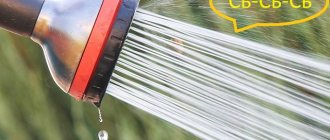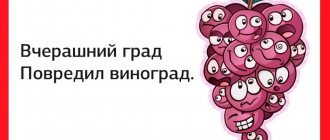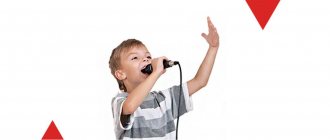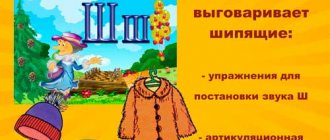Correct articulation of the sound “Z”
The sounds “З”, “Зь”, “С”, “Сь”, “Ц” are classified as whistling sounds as having similar articulation. To learn how to say the letter “Z,” let’s first clarify how the speech apparatus works.
When we pronounce the sound “Z”:
- the lips are slightly stretched, as if smiling;
- the tongue on the sides is pressed against the upper teeth, and at the bottom it rests against the lower incisors;
- a small gap remains between the rows of teeth;
- the soft palate blocks the air stream from exiting through the nose;
- the air passes along the tongue, creating a dull “C”;
- the vocal cords vibrate and “turn on” the voice, without which the sound of “Z” is impossible.
What happens when there is a defect in the reproduction of whistling sounds?
Words made from repeating letters “e m a b z i z t n k o s”
- impunity
- metamathematics
- haphazardness
- non-contact
- petrol supply
- unawareness
- biosystematics
- lifelessness
- cost price
- irrevocability
- certainty
- self-supply
- self-awareness
- crease resistance
- habitat
- cocooning
- uninhabitability
- constancy
- carelessness
- snowiness
- worn out
- lawlessness
- indispensability
- immanence
- training
- lifelessness
- ion exchangers
- kinetostatics
- reliability
- inevitability
Types of incorrect articulation of the sound “Z”
When the pronunciation of whistling sounds is distorted, it is called sigmatism; when it is replaced by other sounds, it is called parasigmatism.
There are several types of sigmatism:
- Labial-dental. With this defect, the lower lip stretches upward and the result is “B” instead of “Z” (“task” - “vada”).
- Side. The tongue on the sides, or only on one side, does not rest on the upper teeth, and the air disperses in the mouth, losing pressure and forming a squelching sound “HL” (“sunset” - “slurp”).
- Interdental. The tongue rests between the rows of teeth, creating a lisping sound.
- Nasal. The soft palate descends to the root of the tongue, exhaled air exits through the nose. This produces a nasal "X".
- Prizubny. The tongue rests on the half-closed teeth and does not allow the passing air to move freely, as a result you hear something between “D” and “Z” (“winter” - “dzima”).
- Hissing. The tip of the tongue moves towards the frenulum, it bends towards the upper palate, the lips are rounded and a hiss is obtained instead of a whistle (“lock” - “zhamok”).
Examples of words with paired consonants at the root of the word
Voiced and voiceless consonants can fundamentally distinguish words, for example:
- ball - heat;
- count - goal;
- house - volume;
- bar - steam;
- blockage - gap;
- pity is a prank.
Within a word, there may be voiced and voiceless consonants nearby that interact with each other. When a voiced and a voiceless consonant are nearby, the second consonant influences the previous one. Definition Voiced consonants [b], [c], [g], [d], [zh], [z] and their paired soft sounds, when they appear in front of the voiceless and at the end of the word, are replaced by their paired voiceless consonants. This replacement is called stunning.
For example:
- occasionally [and from r' and t to a]
- Russula [sy r a y' e sh k a].
This means that in Russian the same letter can convey different sounds. For example, the letter “d” in the words “garden”, “(past) the garden” and “garden” conveys the sounds [t], [d] and [d']:
- [s a t]
- [s a d a]
- [s a d' and k].
Knowing the correspondence between letters and sounds in words will help you pronounce and write words correctly.
If there is a voiced consonant after a voiceless consonant in a word, then it voices the previous sound. Definition: Voiceless consonants [k], [t], [p], [s], [f], [sh], once in front of the voiced ones, are replaced by their paired voiceless ones consonant. This replacement is called voicing.
For example:
- request [p r about z' b a];
- station [v a g z a l].
However, deafening and voicing are not indicated in writing: in all cases the same letter is written. To establish the true nature of the root consonant, it is necessary to take such a form of the word or select a related word in which the consonant being tested was either before the vowel, or before the consonants “l”, “m”, “n”, “r”, “v”.
For example:
[b] - [p]
- box - box, peddler;
- cork - cork;
[v] - [f]
- carrots - a lot of carrots, carrot;
- dexterous, dexterity - he is dexterous;
- pin - pin;
- grass - grass, blade of grass;
- ditch - ditch;
[d] - [t]
- fold - fold, fold;
- trip - travel, rider;
- bed - ridge, bed;
- booth - booth;
- boat - boat;
- berry - berry, berry;
- notebook - notebook;
- platform - platform;
[f]-[w]
- path - path;
- gatehouse - to guard;
- girlfriend - girlfriend;
- spoon - spoon;
- book - little book;
[z] - [s]
- pointer - pointer;
- skid - no skid;
- fairy tale - fairy tale, legend;
- birch - birch tree;
- pruning - trim.
Let us pay attention to words with paired consonants in the root that cannot be verified. August, joke, pharmacy, machine gun, station, zigzag, astronaut, backpack, harness, baking, fluoride, football, exam, etc.
Examples of words with paired consonants at the root of the word
Voiced and voiceless consonants can fundamentally distinguish words, for example:
- ball - heat;
- count - goal;
- house - volume;
- bar - steam;
- blockage - gap;
- pity is a prank.
Within a word, there may be voiced and voiceless consonants nearby that interact with each other. When a voiced and a voiceless consonant are nearby, the second consonant influences the previous one.
Voiced consonants [b], [v], [d], [d], [zh], [z] and their paired soft sounds, when placed in front of the deaf ones and at the end of the word, are replaced by their paired deaf consonants. This replacement is called stunning.
For example:
- occasionally [and from r' and t to a];
- Russula [sy r a y' e sh k a].
This means that in Russian the same letter can convey different sounds. For example, the letter “d” in the words “garden”, (past) “garden” and “kindergarten” conveys the sounds [t], [d] and [d']:
- [s a t];
- [s a d a];
- [s a d' and k].
Knowing the correspondence between letters and sounds in words will help you pronounce and write words correctly.
If there is a voiced consonant after a voiceless consonant in a word, then it voices the previous sound.
Voiceless consonants [k], [t], [p], [s], [f], [sh], when placed in front of voiced ones, are replaced by their paired voiceless consonants. This replacement is called voicing.
For example:
- request [p r about z' b a];
- station [v a g z a l].
However, deafening and voicing are not indicated in writing: in all cases the same letter is written. To establish the true nature of the root consonant, it is necessary to take such a form of the word or select a related word in which the consonant being tested was either before the vowel or before the consonants l, m, n, r, v .
For example:
[b] - [p]
- box - box, peddler;
- cork - cork;
[v] - [f]
- carrots - a lot of carrots, carrot;
- dexterous, dexterity - he is dexterous;
- pin - pin;
- grass - grass, blade of grass;
- ditch - ditch;
[d] - [t]
- fold - fold, fold;
- trip - travel, rider;
- bed - ridge, bed;
- booth - booth;
- boat - boat;
- berry - berry, berry;
- notebook - notebook;
- platform - platform;
[f]-[w]
- path - path;
- gatehouse - to guard;
- girlfriend - girlfriend;
- spoon - spoon;
- book - little book;
[z] - [s]
- pointer - pointer;
- skid - no skid;
- fairy tale - fairy tale, legend;
- birch - birch tree;
- pruning - trimming.
Let us pay attention to words with paired consonants at the root, which cannot be verified.
August, joke, pharmacy, machine gun, station, zigzag, astronaut, backpack, harness, baking, fluoride, football, exam, etc.
Sequence of correction work
Sound production is part of speech therapy work with sound pronunciation, which takes place in stages. In general, the process looks like this:
Only sequential passage of all stages makes it possible to achieve the desired result and consolidate it.
Now let's talk about everything in order.
Preparatory stage
At the preparatory stage, the correct sound and articulation of the formed “Z” is demonstrated. Articulation and breathing exercises are performed to prepare the child to perform basic positioning exercises.
Sound production
There are several ways to set the sound “Z” for speech therapists:
Imitation performance
The child is explained how the organs of the speech apparatus should be located and move, and how “Z” sounds. He repeats after the speech therapist both the isolated sound and the syllables containing it. With this method of presentation, cards, layouts, and illustrations are used for clarity. This makes the process of sound reproduction understandable and conscious.
Mechanical method of installation
When staging sound pronunciation using this method, the position of the speech organs is corrected by auxiliary means, for example, probes, spatulas or fingers.
So, with an interdental defect, the tongue is moved behind the lower front teeth with a spatula; and in case of labiodental, the lower lip is held by a speech therapist.
Staging from reference sounds
Supportive sounds have a reproduction mechanism similar to the impaired ones, but are pronounced correctly by the child. Therefore, staging a problematic sound based on them brings good results. The references for the sound “Z” are “I” and “F”, as well as for “S”. Corrective work on “Z” begins after setting “C”. They differ only in that the voice is used to pronounce “Z”.
Setting "Z" from "I":
- we stretch our lips into a smile and pronounce a drawn out “I”;
- Without changing position, we only try to exhale air noisily;
- when we hear, even if not too acoustically pure, “S”, we translate it with our voice into “Z”;
- We invite the baby to put his hand on the neck and feel how it “buzzes”;
- strengthening the sound, we ring longer.
And pronouncing the sound “F” makes it possible to practice a correctly directed stream of air. You can also make the sound “Z” from “Sh” and “T”.
Setting “Z” from “W”:
- pull “W”;
- move the tongue towards the lower incisors until it stops;
- when we receive a whistling “C”, we connect the voice;
- imitate the sound of a mosquito.
Setting "Z" from "T":
- as you exhale, continuously pull “T”;
- continue and smile;
- the stronger the smile, the thinner the whistling “S” is produced;
- further - according to the well-known algorithm to “Z”.
Spelling words with a paired consonant at the root
When pronounced, paired sounds can replace each other. However, this does not affect the writing in any way. It follows from this that the letters in a word remain unchanged, no matter what sounds are heard in their place. Thus, the principle of uniformity of morphemes is implemented in the Russian language. This law completely subordinates the spelling of consonants that have a pair. The rule is stated in the following paragraphs:
- the spelling of the root is always the same, because semantics depends on it;
- It is necessary to check spelling by selecting words with the same root or changing the forms of the word;
- Testers need to choose one that has a vowel or sonorant sound after the questionable letter, which include r, l, m, n, y.
If the paired sound is at the root, then it is very easy to make a mistake. To avoid making mistakes, you need to select test words according to the rule. The rule goes like this: to check a paired consonant, you need to choose a test word such that after this consonant there is a vowel or sonorant sound.
For example, "snow". The sound “k” is heard at the end. To check, we select a word such that after the consonant there is a vowel - “snow”. Now the sound “g” is heard, which means the letter “g” is written.
This is interesting: does it matter how it is spelled?
Thus, paired letters located in the root of a word require verification when they are in a weak position, that is:
- at the end of words (for example, siskin);
- when they are in the middle of a word, and after them there is a paired consonant (for example, birch, easy, etc.).
Those letters that are in a strong position do not need to be checked. This usually happens when a consonant is followed by a vowel or a sonorant consonant.
Need to know: What is the correct spelling: also or the same?
Spelling in third grade
In the third grade, children actively learn to read and write and the rules of the Russian language, because this is the basis of spelling. It is simply necessary to know these rules, because due to some features of the Russian language it can be difficult to put the correct letter. Letters that have a pair are particularly difficult for children to write. Especially when they are at the end or at the root. By the third grade, there should be much fewer errors, especially if the child has well mastered the rule discussed above.
To write correctly, you need to be able to identify the root. First select it in the first value, and then in the test value. The vowel after the test root must be emphasized with two strokes. With this analysis, it immediately becomes clear how the original version is written and why.
The teacher’s goal is to convey to his students the correct spelling and teach them to select words with the same root. When a child knows how to do this, he makes much fewer mistakes.
This is interesting: the meaning of the phraseological unit “Trishkin caftan”.
Examples
There are many examples in which the student can clearly see spelling. Visualization is the best way to remember the rule and write correctly in the future. Examples include:
- Tooth - teeth (you can hear “p”, but write “b” - this becomes clear after checking).
- Grass - a blade of grass or weed (at the root you can hear the sound “f”, but you need to write “v” correctly. Again, if you check and choose another word, it will no longer be possible to write it incorrectly).
- Horse - horse (the sound “t” is heard, but after checking, we get the correct spelling with the letter “d”).
- Oak - oak trees (you can hear a “p” at the end, although when checking it becomes clear that you need to write “b”.
There are many such examples, and having learned to select them, the child will write much more competently and make fewer mistakes. The main thing is to help him learn to do it .
Automation of the sound "Z"
It is not enough to just pronounce a sound; you need to learn how to use it in your speech. At the next stage after setting, the learned skill is consolidated. First in isolation, then in syllables, words, phrases and sentences.
To automate the sound “Z,” you can practice pronouncing it in poetry, tongue twisters, tongue twisters, riddles, and phraseological units.
For example,
poems with the sound "Z"
pure sayings starting with “Z”
tongue twisters starting with "Z"
And here are some more interesting riddles and phraseological units starting with the letter “Z” at the automation stage.
Puzzles:
Phraseologisms:
hack it on the nose, throw it in hats, it will heal like on a dog, kill the worm.
A speech therapy session on automating problem sounds will be more successful if it is organized in a playful way using color pictures, toys, cubes, lotto and other items.
Here are some ideas for automating “Z”:
- Ask your child to name the colors of the blocks. What color starts with " Z "? That's right, green . Let's add the green cubes separately. What toys contain the letter " Z " in their name? Bunny , bunny , dog Zina . It turns out that a hurricane destroyed their houses, and they decided to build one common house from green cubes. One day, while walking in a green forest, it started to rain. “Where are our zons ?” - the believers shouted . They rushed home, but the evil wolf Zaza was waiting for them . The little girls were not afraid; they invited the wolf to come and wait out the rain over a cup of aromatic tea with strawberry jam.
- Place the colored pictures in a row and let the child choose from them those that depict objects with the letter “Z”.
- You name the word, and the child repeats it in the plural (tooth-teeth, beast-beasts).
Regular practice is an indispensable condition for the development of any skill. Only by being determined to work methodically and with the support of a speech therapist can you help your son or daughter overcome the naughty letter.
Words made up of non-repeating letters “e m a b z h i z tn k o s”
9 letters
- homeless person
- appearance
8 letters
- asceticism
- queenless
- dear god
- marriage
- pamper
- dungeon
- foreigner
- casteism
- cinema network
- plant
- cuffs
- manicness
- metabiosis
- Ossetian
- squeezing
7 letters
- acmeist
- asenki
- asthenic
- asiento
- nuclear scientist
- bastion
- concrete pavement
- botanist
- jacket
- married
- prosperous
- antiaircraft gun
- footboard
- isoteca
- cabinet
- kazinet
- camboist
- cameton
- canoeist
- boater
- flail
- cystoma
- combine
- playpen
- mestizo
- mosaicist
- coin
- shaking
- meanness
- compression
- swage
- reaping
- warm-up
- hug
- oxazine
- omezhnik
- remains
- octopus
- spin
- sabeism
- sbiten
- seventh
- cattle
- subcontractor
- snobbery
- sonnetka
- hundred
- trainee
- tick
6 letters
- absinthe
- aconite
- aminek
- amitosis
- atheism
- banquet
- bow
- basketball
- batch file
- buttocks
- benthos
- betaine
- mizzen
- business
- bauxite
- bosquet
- nerd
- raccoon
- frogman
- jasmine
- Jasmone
- nitrous
- sign
- connoisseur
- umbrella
- treason
- hiccups
- languor
- casein
- casino
- cambio
- stone
- cation
- kinema
- battalion commander
- comet
- koset
- Kosina
- mowing
- cassava
- Monkeys
- Maoist
- matico
- mother
- internik
- meniscus
- mentik
- metina
- coin
- monist
- installation
- mosquito
- bridge
- gangway
- pug
- platform
- onslaught
- undead
- somehow
- muteness
- nosema
- winter
- okanye
- Ossetian
- aspen
- cancellation
- fathom
- centime
- glitch
- compression
- synthesis
- blue
- winding
- snowballs
- snowball
- smelt
- photo
- snapshot
- dogs
- Somina
- Sonic
- centurion
- machine
- stitch
- wall
- stenosis
- taxon
- dragging
- Tekoma
- temnik
- taeniasis
- narrow
- braid
- tonema
- tonic
5 letters
- azet
- axon
- actin
- antique
- ascetic
- basis
- buoy
- Basque
- Basque
- bason
- batik
- loaf
- bezique
- snipe
- bacon
- concrete
- biax
- buffalo
- binomial
- biont
- biota
- cue ball
- cue ball
- bocage
- bonze
- boot
- jacket
- Jacob
- tin
- token
- life
- Zhinka
- life
- clamp
- clamped
- law
- batch
- jam
- zamot
- skid
- inlet
- backwater
- zenith
- countersinks
- winter
- know
- goiter
- soman
- zombie
- wear
- icon
- hiccups
- source
- execution
- fireplace
- ketosis
- ketone
- cilantro
- pouch
- cyst
- brush
- kobza
- intrigues
- combi
- Komsa
- bone
- mace
- smear
- layout
- playpen
- mania
- decoys
- manco
- decoy
- Mansi
- coat
- Freemason
- suit
- meson
- places
- to sweep
- place
- revenge
- methane
- mestizo
- label
- mycosis
- mixed
- Bowl
- mitosis
- Monsieur
- skein
- pressure
- mow
- German
- low
- low
- thread
- knife
- leg
- spout
- sock
- socks
- notice
- note
- oasis
- crimp
- dinner
- run-in
- deception
- exchange
- exchange
- ozhika
- ohina
- ozena
- winter
- ocean
- oxide
- octane
- onyx
- autumn
- Ottoman
- stop
- spin
- refusal
- compartment
- sambo
- sled
- satin
- sesame
- season
- sect
- semik
- Semite
- haylage
- senate
- net
- sienna
- sizok
- sycosis
- Shinto
- scan
- skena
- bracket
- lubricant
- change
- estimate
- catfish
- somite
- sonnet
- weave
- stack
- wall
- stoic
- stoma
- tabes
- basin
- Taxi
- thesis
- theism
- cleaver
- textile
- toman
- volume
- tonic
- yearning
4 letters
- agio
- nitrogen
- stork
- amine
- amok
- anise
- anit
- anti
- atom
- tanks
- bank
- bow
- Basque
- best
- beta
- oddity
- bix
- beam
- bandage
- biome
- God
- boxing
- bum
- bond
- hedgehog
- raccoon
- frill
- gray
- jug
- wife
- gesture
- lively
- miser
- winter
- sign
- zone
- umbrella
- yen
- hut
- ikos
- Ikta
- Inca
- Enoch
- edging
- caste
- Kas
- chum salmon
- movie
- icon case
- kitty
- whale
- leather
- goat
- coma
- Komi
- horse
- braid
- ointment
- maize
- poppies
- mans
- mate
- mother
- boundary
- exchange
- cop
- mesa
- meta
- myiasis
- mine
- miosis
- bridge
- monsieur
- naib
- naos
- present
- sky
- neti
- nimbus
- a thread
- noma
- note
- vow
- obzha
- them
- Oski
- awn
- clogs
- sake
- saki
- sled
- sati
- sema
- canopy
- hay
- canopy
- net
- squeeze
- Siam
- sima
- blue
- sieve
- tale
- stingray
- sket
- skin
- monastery
- livestock
- gusto
- snob
- soma
- sona
- Sony
- host
- sleepyhead
- sauté
- experience
- stasis
- mill
- stack
- walls
- stick
- drain
- moan
- tank
- thesis
- theine
- tex
- subject
- darkness
- shadow
- Tina
- caraway
- dark
3 letters
- or else
- even
- aki
- Act
- amt
- ano
- ant
- ask
- ass
- bases
- tank
- bass
- baht
- beck
- demon
- bio
- boa
- fight
- side
- bond
- bot
- if you
- bench press
- jock
- pulp
- deputy
- convict
- z
- goiter
- others like it
- X
- ict
- yin
- and he
- lawsuit
- cat
- kea
- cab
- ken
- kin
- whale
- com
- con
- cat
- xi
- maz
- poppy
- mat
- spendthrift
- nai
- bottom
- Nick
- nit
- knife
- nok
- nom
- nose
- wasp
- ost
- axis
- soot
- saz
- sak
- san
- set
- juice
- som
- dream
- the same
- pelvis
- thai
- teak
- yew
- weave
- also
- current
- volume
- tone
Automation of sounds in spontaneous speech
At the final stage, when all the steps of painstaking work on the unruly sound have been completed, it is introduced into spontaneous speech.
Try playing word games:
- Continue the phrase: “Today on the way home I...”; “I liked how...”; “I recently found out that...”
- Tell me what color is your mood. For example, pink - joyful and carefree; or gray - sad and gloomy.
- Thematic stories about how a bear lives in the zoo; why does the fox have such a beautiful tail; what a woodpecker is doing in the forest, etc.
Self-control is the key to successful work on problematic sounds
In order for all the work done to be crowned with success, it is necessary to take into account such a factor as the child’s ability to control his pronunciation. Classes with a speech therapist and communication with parents are only part of the time where control is established over the child’s speech. The rest of the time, including when communicating with peers, the child must learn to monitor his speech himself.
To prevent this from becoming an annoying chore, motivate him to overcome his speech impediment, support him during failures, and praise him for small victories over himself. Your baby will definitely succeed, don’t doubt it.
As well as the fact that he will grow into a purposeful, open-to-communication person.
Paired consonants
Paired consonants are letters that, according to their characteristics that characterize them, have a certain pair. One of these signs is the contrast between voiced and dull sounds.
Certain consonants may differ only in how the voice is involved in pronunciation. Other signs are the same. Others that do not have a pair in accordance with the signs: voiceless - voiced - not paired. These include: l, m, x, c, h, sch, j.
This is interesting: where is the emphasis in the word beets?
In order to be literate, you must know these letters and sounds, as well as know the rules. Examples of words with a paired letter at the root:
- pillar (p) - test - pillars
- frost (s) - checked with the word freeze or frosty
- beard (t)ka - test - beard











